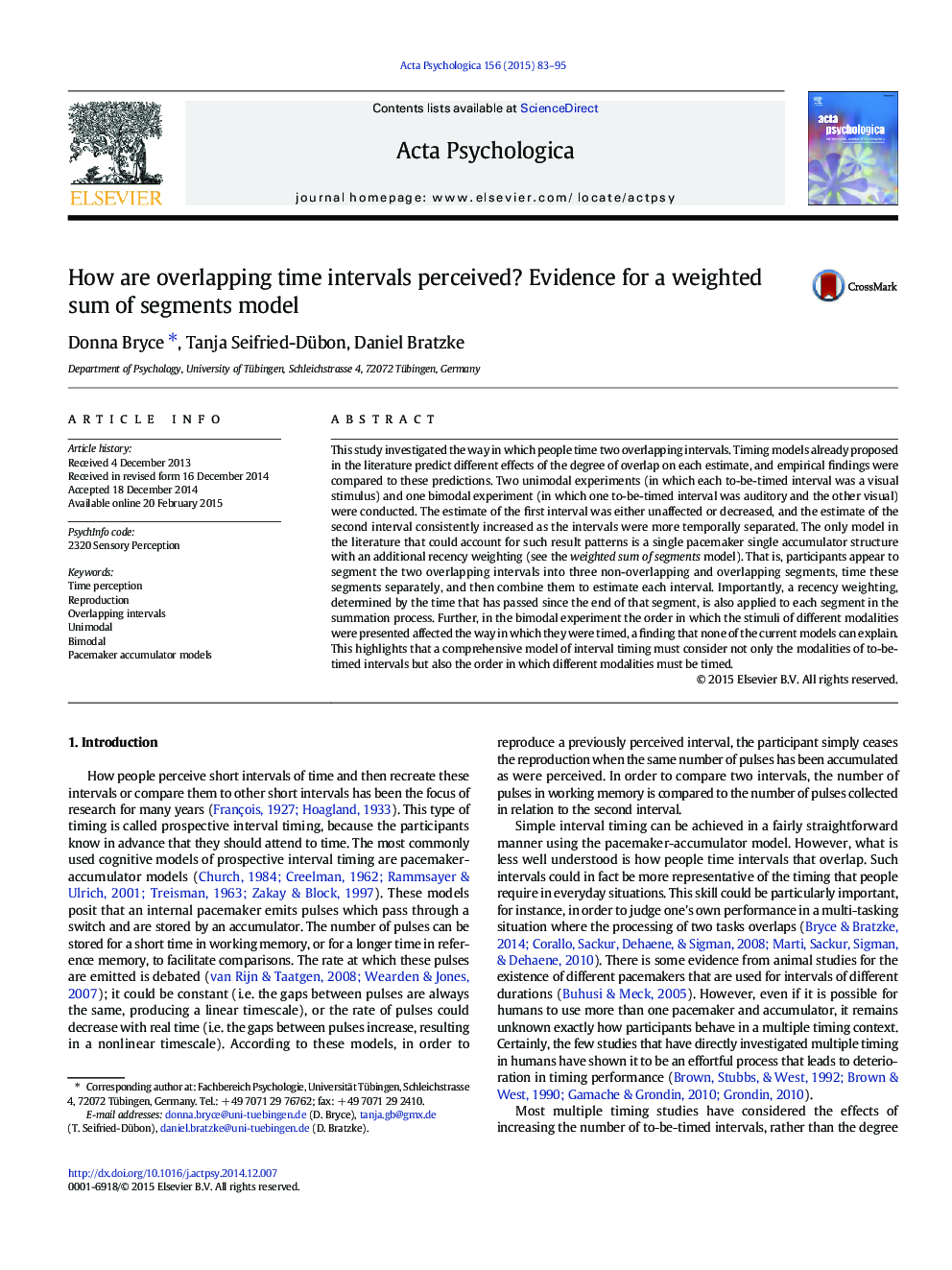| Article ID | Journal | Published Year | Pages | File Type |
|---|---|---|---|---|
| 7277459 | Acta Psychologica | 2015 | 13 Pages |
Abstract
This study investigated the way in which people time two overlapping intervals. Timing models already proposed in the literature predict different effects of the degree of overlap on each estimate, and empirical findings were compared to these predictions. Two unimodal experiments (in which each to-be-timed interval was a visual stimulus) and one bimodal experiment (in which one to-be-timed interval was auditory and the other visual) were conducted. The estimate of the first interval was either unaffected or decreased, and the estimate of the second interval consistently increased as the intervals were more temporally separated. The only model in the literature that could account for such result patterns is a single pacemaker single accumulator structure with an additional recency weighting (see the weighted sum of segments model). That is, participants appear to segment the two overlapping intervals into three non-overlapping and overlapping segments, time these segments separately, and then combine them to estimate each interval. Importantly, a recency weighting, determined by the time that has passed since the end of that segment, is also applied to each segment in the summation process. Further, in the bimodal experiment the order in which the stimuli of different modalities were presented affected the way in which they were timed, a finding that none of the current models can explain. This highlights that a comprehensive model of interval timing must consider not only the modalities of to-be-timed intervals but also the order in which different modalities must be timed.
Related Topics
Life Sciences
Neuroscience
Cognitive Neuroscience
Authors
Donna Bryce, Tanja Seifried-Dübon, Daniel Bratzke,
